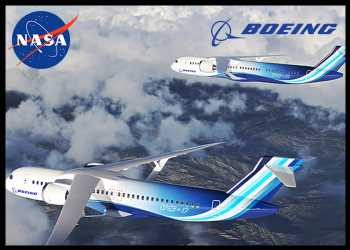
Boeing, NASA To Develop Green Single-aisle Airliners
January 19, 2023Boeing Co. is joining with NASA’s Sustainable Flight Demonstrator or SFD project, aiming to build a new generation of green single-aisle airliners this decade.
The U.S. Space agency has given the aerospace and defense major and its industry partners a contract for the development and flight testing of a full-scale Transonic Truss-Braced Wing or TTBW demonstrator airplane, an emission-reducing single-aisle aircraft.
The agency noted that single-aisle aircraft, which forms majority of airline fleets, account for nearly half of worldwide aviation emissions due to their heavy usage.
The TTBW concept involves an aircraft with extra-long, thin wings stabilized by diagonal struts.
Such airplanes with a TTBW configuration are expected to reduce fuel consumption and emissions up to 30% relative to the most efficient single-aisle airplanes available now.
Over seven years, NASA will invest $425 million through the SFD Space Act Agreement, while the company and its partners will contribute the remainder of the agreement funding, estimated at about $725 million. Separately, Boeing’s previous internal investments for recent phases of sustainable aviation research total $110 million.
NASA plans to complete testing for the project by the late 2020s, and expects the next generation of single-aisle aircraft to enter into service in the 2030s.
For the demonstrator vehicle, Boeing will use elements from existing vehicles and integrate them with all-new components. As part of the deal, the agency also will contribute technical expertise and facilities.
NASA Administrator Bill Nelson said, “It’s our goal that NASA’s partnership with Boeing to produce and test a full-scale demonstrator will help lead to future commercial airliners that are more fuel efficient, with benefits to the environment, the commercial aviation industry, and to passengers worldwide. If we are successful, we may see these technologies in planes that the public takes to the skies in the 2030s.”
NASA’s SFD program aims to help the United States achieve civil aviation industry’s goal to be net zero carbon emissions by 2050, as well as the goals set forth in the White House’s U.S. Aviation Climate Action Plan. The International Civil Aviation Organization also has set a goal of net-zero carbon emissions by 2050.
The parties expect the technologies demonstrated and tested as part of the SFD program to inform future designs, and to lead to breakthrough aerodynamics and fuel efficiency gains.
Source: Read Full Article


